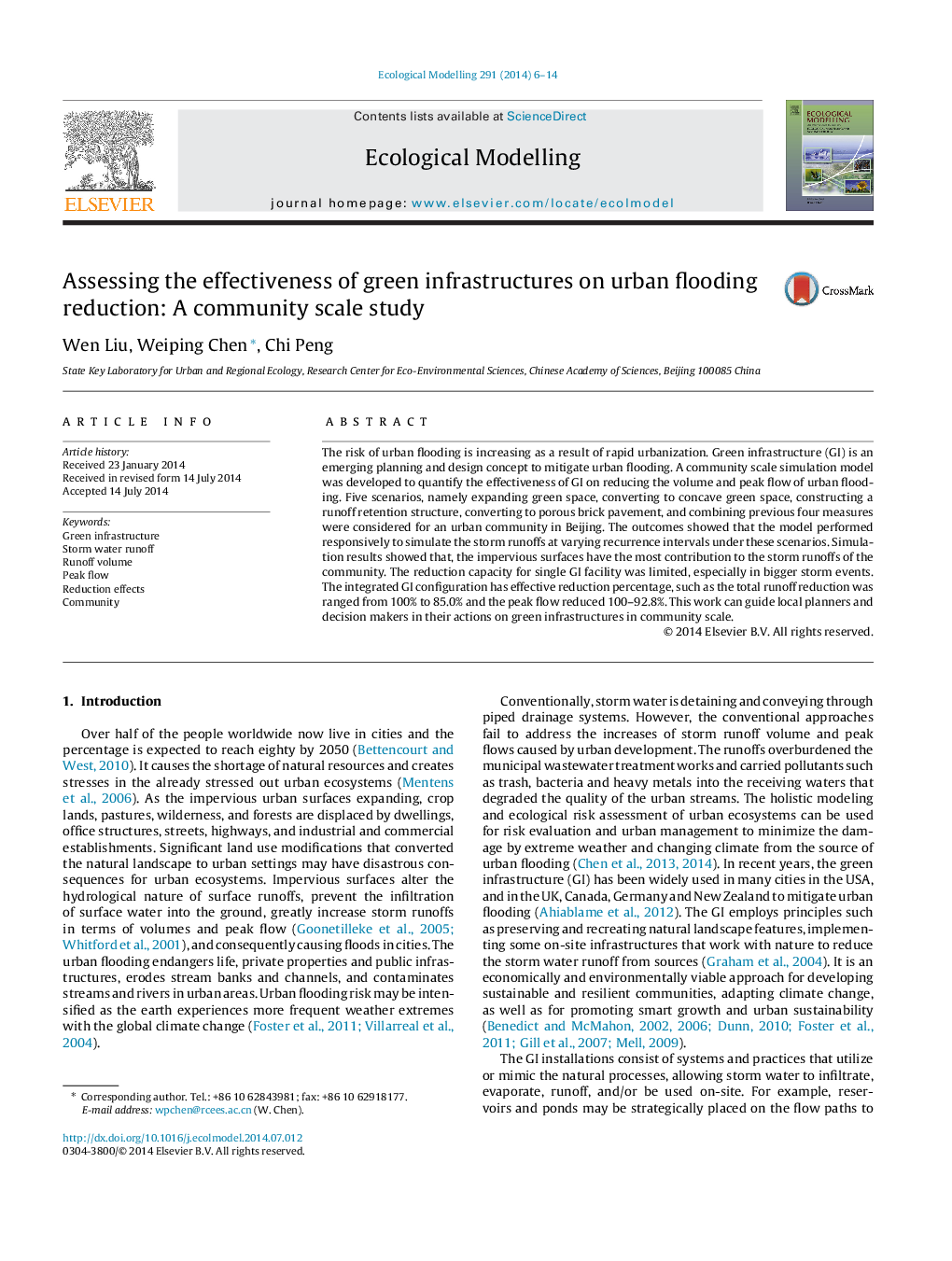| Article ID | Journal | Published Year | Pages | File Type |
|---|---|---|---|---|
| 6296735 | Ecological Modelling | 2014 | 9 Pages |
Abstract
The risk of urban flooding is increasing as a result of rapid urbanization. Green infrastructure (GI) is an emerging planning and design concept to mitigate urban flooding. A community scale simulation model was developed to quantify the effectiveness of GI on reducing the volume and peak flow of urban flooding. Five scenarios, namely expanding green space, converting to concave green space, constructing a runoff retention structure, converting to porous brick pavement, and combining previous four measures were considered for an urban community in Beijing. The outcomes showed that the model performed responsively to simulate the storm runoffs at varying recurrence intervals under these scenarios. Simulation results showed that, the impervious surfaces have the most contribution to the storm runoffs of the community. The reduction capacity for single GI facility was limited, especially in bigger storm events. The integrated GI configuration has effective reduction percentage, such as the total runoff reduction was ranged from 100% to 85.0% and the peak flow reduced 100-92.8%. This work can guide local planners and decision makers in their actions on green infrastructures in community scale.
Related Topics
Life Sciences
Agricultural and Biological Sciences
Ecology, Evolution, Behavior and Systematics
Authors
Wen Liu, Weiping Chen, Chi Peng,
